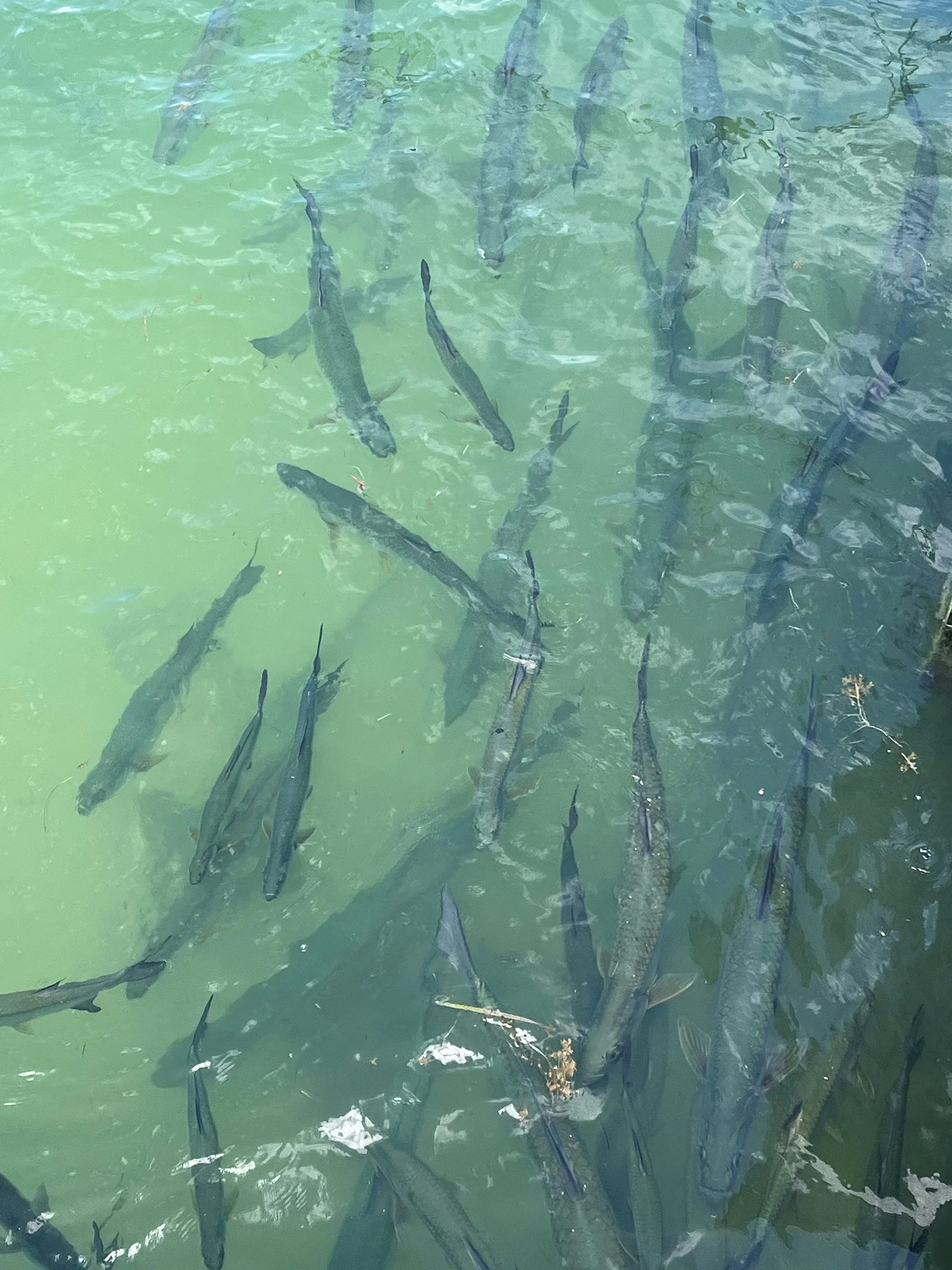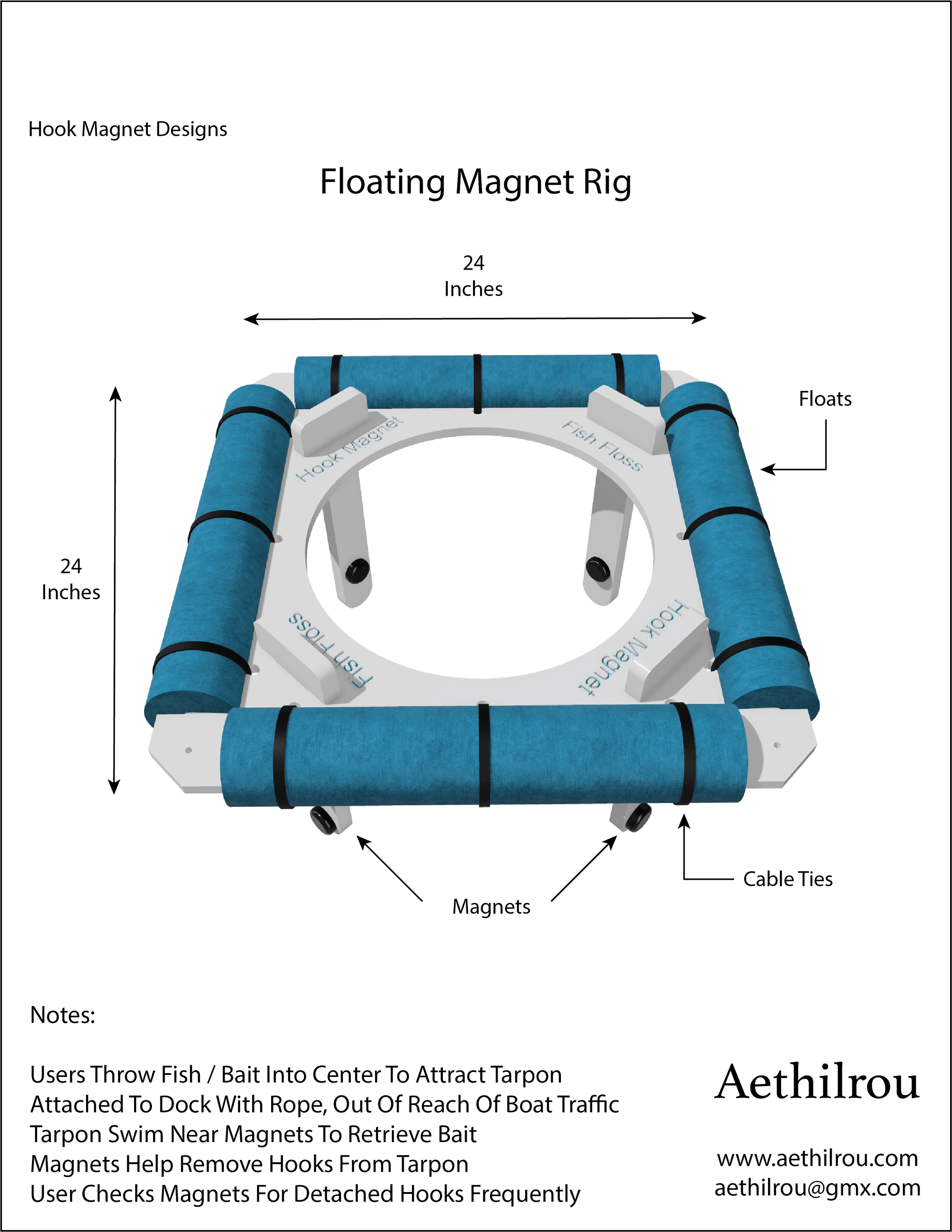Tarpon Research
Tarpon are some of the most magnificent fish that frequent the shallow waters of Florida. The research that we conducted was on the behavior of Tarpon that swim near fish cleaning stations and around marinas, and the frequency of sightings of Tarpon with hooks and fishing line stuck in their jaw.

Tarpon Facts
Tarpon have large scales that protect their bodies. They grow up to eight feet in length. Tarpon are one of the few fish that travel to and from shore, swimming near the surface in shallow water and diving in deeper water. Tarpon can take gulps of air when oxygen in the water is low. They are one of the most important fishing species in Florida, and are well known for their ability to jump out of the water when hooked and even snap the line with their tails.
Tarpon Fishing
Tarpon are strong and energetic, and will usually jump and shake their heads when hooked. They have tough cartilaginous and bony mouths, which makes getting the hook out a difficult task. They often break the fishing line and are left with a hook and several feet of line streaming from their jaw. This can be hazardous to their health and sightings of these tarpon are common. Fish hooks made from iron will rust out after several weeks, however steel hooks will not rust out for many months.
Fish Cleaning Stations
Many types of fish and birds congregate around fish cleaning stations. Tarpon are sent into a frenzy when scraps of fish are thrown into the water, as they are competing among themselves and with other fish, nurse sharks, sea gulls, pelicans and egrets for a quick meal.
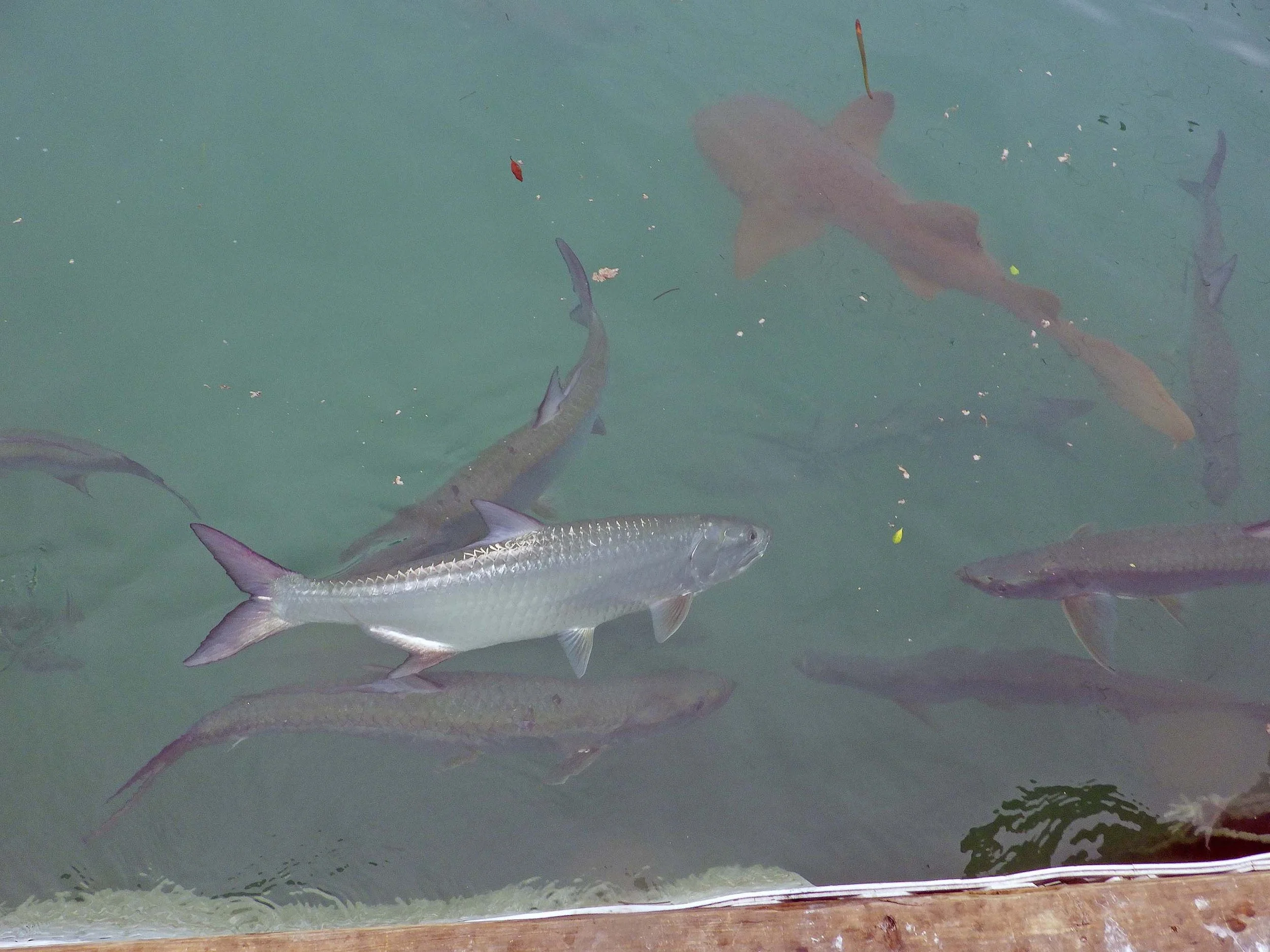
Tarpon and Nurse Shark

Tarpon With Fishing Line

Tarpon

Tarpon With Deformed Jaw

Tarpon By The Dock

Tarpon With Fishing Line
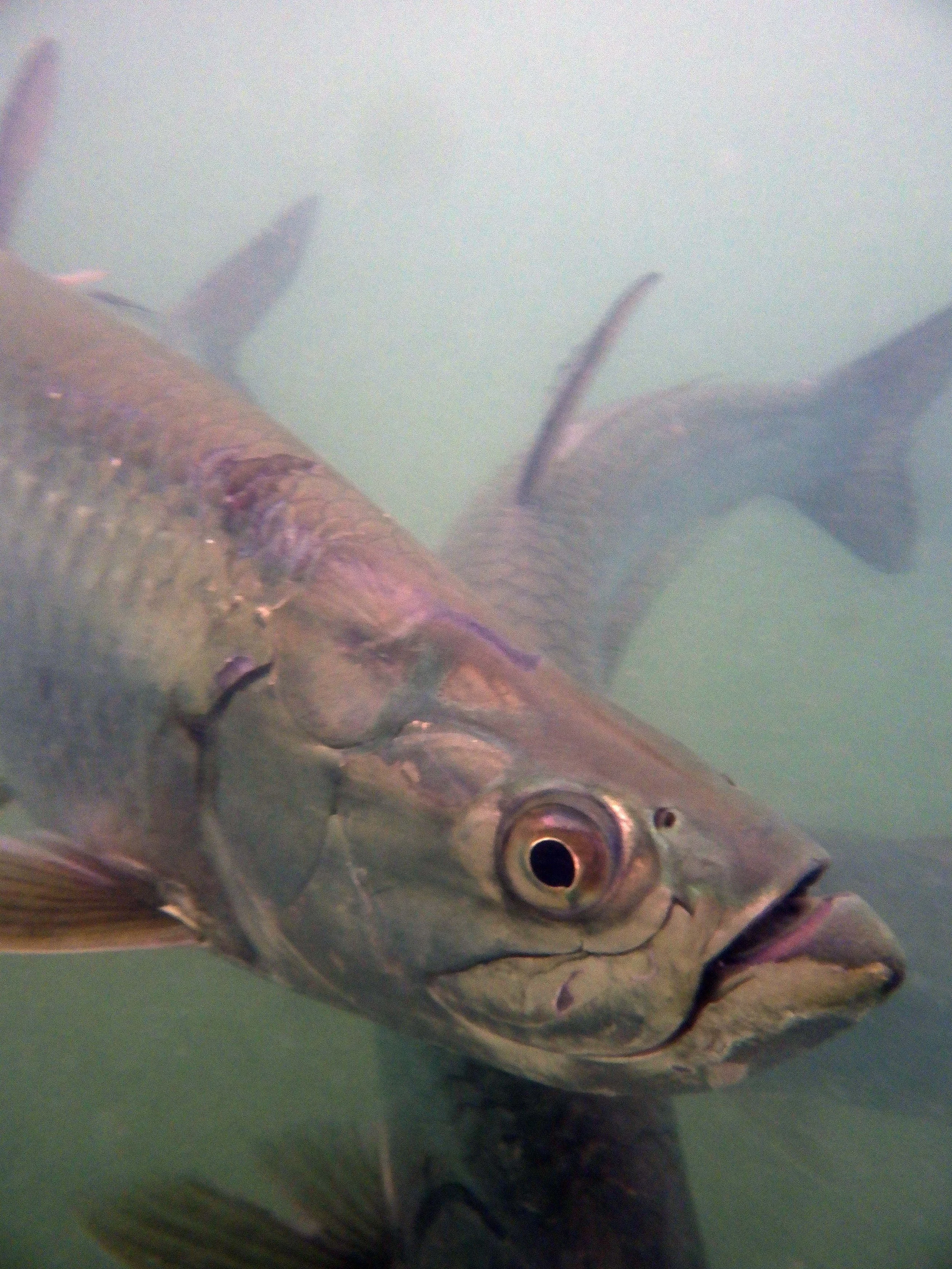
Tarpon

Tarpon With Hook
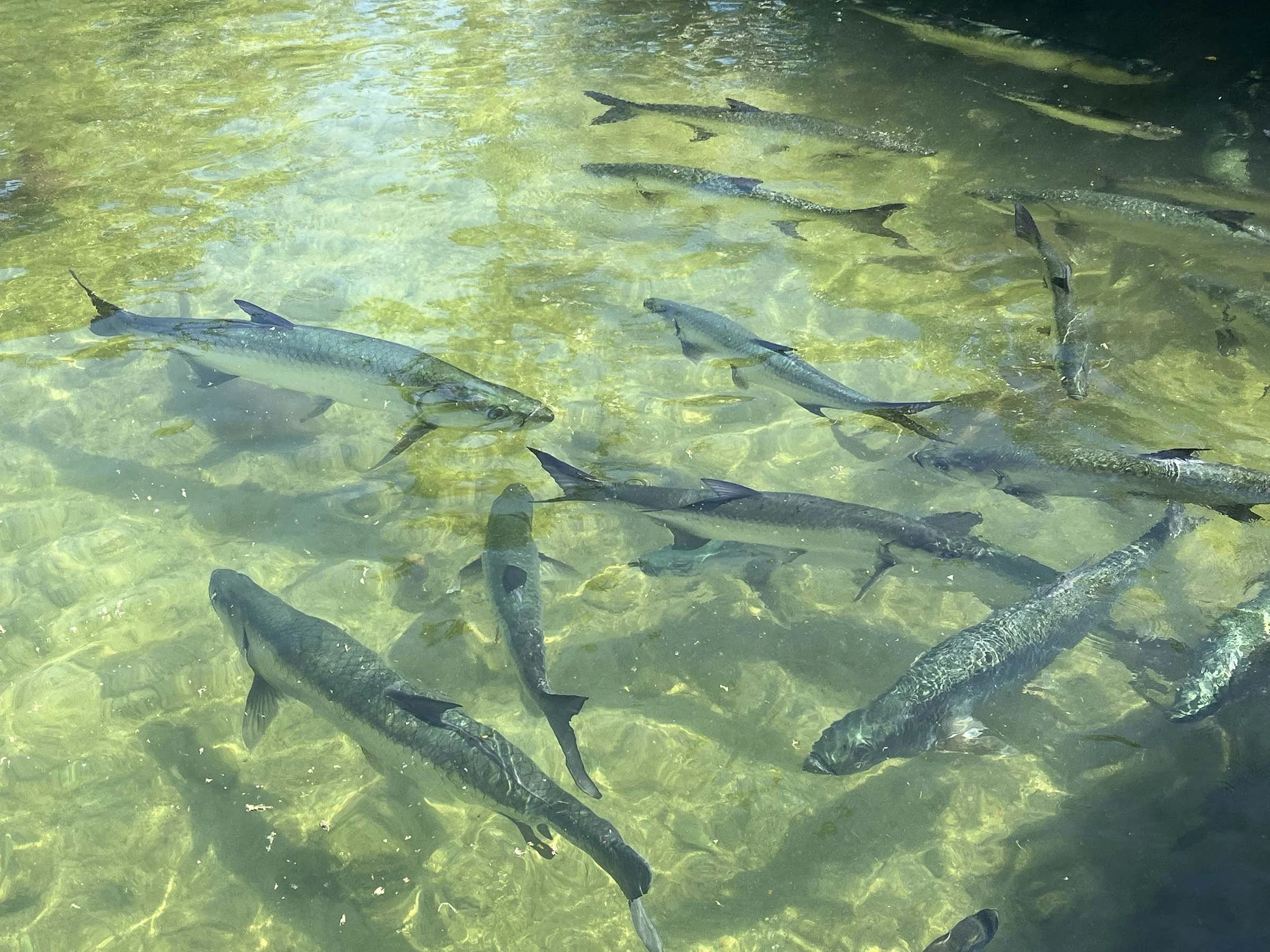
Tarpon
Tarpon Videos
Hook Removal Device
The magnetic hook removal device can be made as a DIY project with only a few materials; plastic board, foam floats, cable ties, magnets and rope. If you would like to help with the research necessary to prove this concept and make it into a marketable product, we would love to hear from you.
There are several potential concepts that could work and at this time there is no indication that one will be more successful than the others. It’s a DIY concept designed specifically to help Tarpon, however it could be made into a profitable product, and hopefully one day it will be the center of attention at the marinas where Tarpon gather. If you would like more information about the magnetic hook removal device concept, please send us an e-mail.
T Shaped Floating Magnet Rig
Concept Designs
4 Inch Double-sided Magnet Rig With Anchor
DIY Materials:
Corrosion Resistant Magnets; 3-layer Coated Neodymium Magnets
Marine Board (HDPE) 1/2 or 1/4 Inch Thick, 2 by 2 Ft.
Marine Grade Nylon Rope, 1/4 Inch Thick, 25 Ft.
18 Inch Cable Ties and Foam Noodle Floats (Polyethylene)
Optional Stainless Steel Screws / Bolts or Rope to Attach Magnets
Caution: Only use in places without swimming or boat traffic.
Tarpon Target Floating Magnet Rig
Floating Square Magnet Rig


